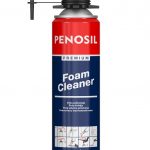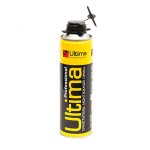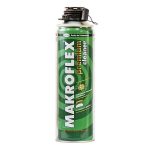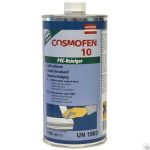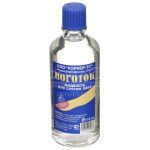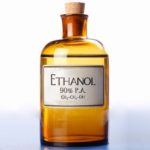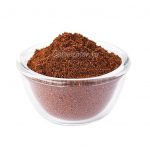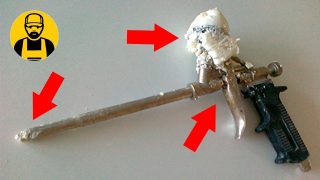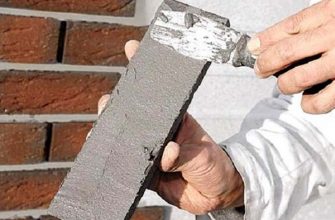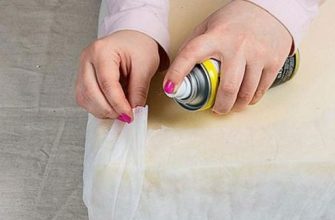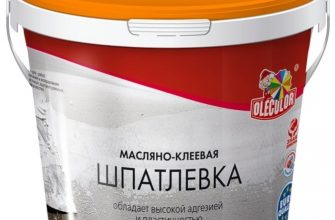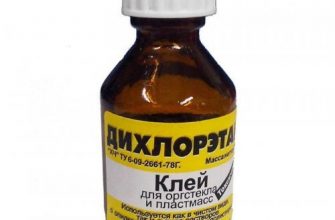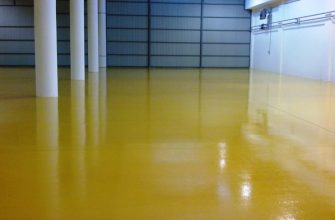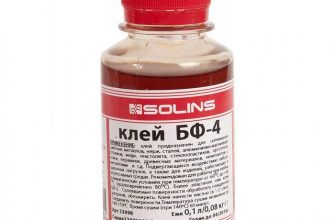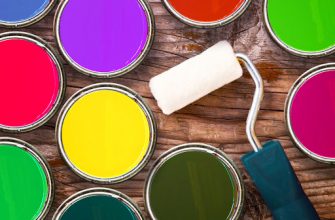One of the characteristics of polyurethane foam is high adhesion to any surface it hits. It is difficult to remove it from the skin of the hands, clothing, and other surfaces, especially if the mass is dry. Prevention plays a primary role: for example, film protection of objects in the work area. But even careful use of cylinders with a tube or pistol sometimes leads to contamination.
Tools and means for removing polyurethane foam
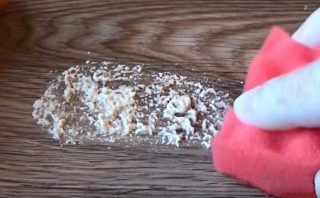
Polyurethane foam quickly polymerizes, therefore the dried mass scraped off the surface with a spatula, a construction knife. To wet the contaminated area, use a brush, cotton and cloth swabs.
Commonly used solvents and washes industrial production:
- Makroflex copes well with foam pieces on wood floors, walls, modern PVC frames.
- Cured Premium Foam Cleaner effectively works on cleaning fresh sealant on various surfaces, jeans, silk, cotton. The dried material takes more time, but the efficiency is high.
- Ultima Professional more often used for uncured mass.
- Cosmofen better suited for cleaning plastic, glass from wet and dry deposits, used by window installers.
Acetone-based solvents No. 646 and 647 liquefy foam, they are used for some types of material, unpainted wood, brick, concrete. For plastic, laminate, linoleum, the product is not suitable.
Fresh foam
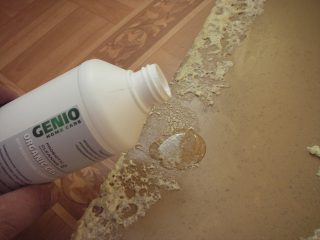
The expansion of the trapped foam on the surface will continue until the polymerization or drying process is complete. It is easier to remove the foam that has just come out of the tube of the cylinder, since it did not have time to soak the top layer. Acquire in advance special solvent, if work is coming to seal joints, cracks, installation of windows.
Application procedure:
- the main mass is immediately removed with a knife, trying to clear the place as much as possible;
- the solvent is tested on the inconspicuous side of the product to determine the danger of damage;
- if there are no changes in color or the integrity of the layer, wipe the contaminated area until it is completely cleaned.
If the polyurethane foam hits the adjacent planes, they immediately leave the work and remove fresh drops.
Dried foam
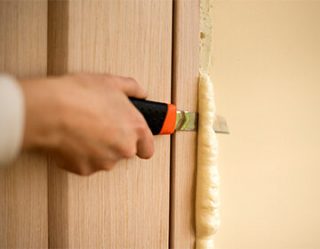
It is more difficult to completely remove the frozen old drop from the surface, since the chemical ingredients have already reacted inside and bound the polyurethane foam to the base material.
In this case, double method:
- mechanical cleaning - cut the layer with a knife so as not to damage the upper layer of wood, plastic;
- re-chemical treatment - Carefully apply a solvent or other effective means to dissolve foam residues.

Use of improvised means
The means at hand work quite effectively in some cases, but the result of the work depends on the type of foam, its consistency, quality, density.
Types of improvised drugs:
- nail polish remover - a product based on acetone, so you need to check the effect on things;
- alcohol (ethanol) - the substance belongs to the group of effective polar solvents;
- mixture of ground coffee beans and detergent.
The solutions are applied to the stain left after mechanical cleaning. You need to wait for the composition to work (10 - 30 minutes). Then work is continued with a stiff brush. On a stone or concrete surface, tiles, you can take a tool with iron teeth.
Cleaning rules for various surfaces
The mounting seal can get on different materials that react differently to friction, roughness, and chemical attack. For example, a plastic and concrete window sill is cleaned using different methods. Also, dissimilar methods are used on walls covered with siding panels, wood, tiles or wallpaper.
Foam is removed immediately, while fresh. The hardness of the base under the foam is assessed: it is scraped off mechanically on hard materials, and washes and solvents are used on delicate materials.
Chemicals are applied strictly on the affected areas, used only for thin layers of adhering foam. Repeat if necessary if the mixture has not softened.
Hand skin
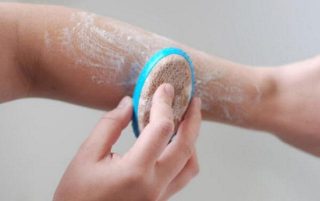
The skin will cleanse itself in a few days due to the detachment of the epithelium. If there is no time to wait use methods:
- Tap water together with large salt or salt scrub... For a complete cleaning, several approaches are required. Hands are kept in a solution (3 tablespoons of salt in a glass of water) for five minutes, then use a brush, a hard washcloth, pumice stone.
- On nails mass is removed nail polish remover.
- Apply alcohol, acetone, vinegar, building solventafter cutting off the bulk of the expanded polystyrene.
After treatment, hands are lathered and washed off.
clothing
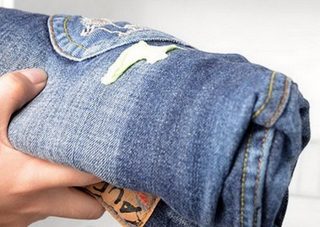
If foam gets on the fabric act quickly. Store-bought liquids, white spirit, grease, acetone, solvent No. 646, 647 are better suited. The latter varieties are aggressive and can corrode the canvas.
Processing rules:
- after 2 - 3 hours, it will no longer be possible to wash a thing with a frozen stain;
- the type of solvent is chosen according to the type of fabric so as not to damage it;
- allow the use of several solutions in turn.
A common method is to freeze the foam in the freezer for several hours. The frozen mixture is cleaned with a knife. The method is good for fabrics with a smooth surface, but a loose and lattice structure cannot be cleaned this way.
Wooden door
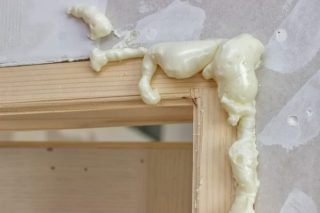
Cloths and boxes of products are usually assembled with subsequent painting. In this case, the foam removed with washes or peeled off with a knife, scraper, sandpaper. If the surface is damaged as a result, it is putty, varnished or painted. Usually, wooden surfaces can easily tolerate such interference.
In another case, foam gets onto the finished and lacquered product. In this case, washings are used, carefully treating the affected area. Works well saline solution, with which the frozen foam is lubricated, wait 20 minutes, then remove with a foam sponge.
Plastic
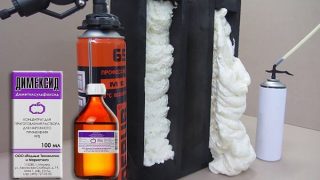
Plastic panels and siding on the walls are exposed to foam contamination if windows and doors are placed next to them. Plastic is quite resistant to chemistry, so most of the professional foam solvents are applicable to it.
For the cleaning use ways:
- mechanical cutting of the upper layer of polyurethane foam;
- a chemical solvent is applied to the remaining particles;
- sometimes they use a pharmaceutical drug-gel "Dimexid", which also liquefies the mass;
- the remains are cleaned with a foam rubber kitchen sponge.
Allow the use of vegetable oil and vinegar. If the remedy does not work, take another. The strength of the foam depends on its composition and strength characteristics.
Metal and glass surface
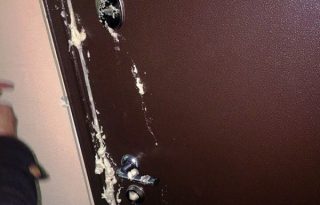
Painted iron it is not recommended to process with chemically aggressive substances. It is easy to spoil the layer on the surface, but it will take a long time to restore, and it will not be cheap.
Procedure:
- the foam mass, preferably liquid, is removed with a spatula, as much as possible;
- the remainder is greased with warm oil (sunflower);
- clean off the softened foam;
- the surface is washed with soap to remove grease.

Linoleum
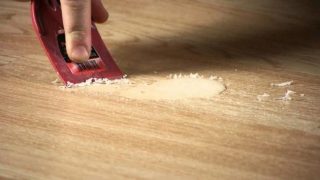
On good and high-quality linoleum with a thick surface film, the foam does not stick, as well as on glass. It is cleaned with a tool without residue. For other types of linoleum, it is dangerous to use mechanical processing so as not to damage the coating.
Cleaning process on linoleum:
- remove the top of the foam under the base with a knife;
- use the drug "Dimexide", it is applied with a brush;
- wait 20 minutes, then apply a foam sponge.
Instead of "Dimexid" use liquid for nail polish remover, the procedure is the same. A fresh drop is removed with a solvent or white spirit.
Laminate
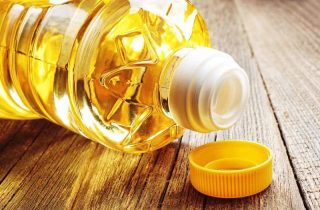
Handle the material with caution, because coating does not tolerate the effects of chemistrylike power tool cleaning... If the surface film is damaged, the whole floor will need to be disassembled to replace one board.
Apply vegetable oil, which is applied several times, try to remove the residues after each application with a sponge or brush. You can take "Dimexid", nail polish remover. The latter contains acetone, but its composition is more gentle than a real solvent.
The thinner is applied to the laminate gently with a small brush or cotton swab. Do not use a spray bottle.
PVC windows
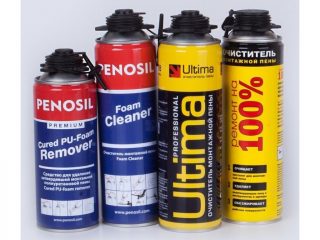
When installing window frames, balcony fillings made of metal-plastic, durable foam is used for outdoor use. As a result, slopes, window frames, glass, metal sills with a polymer coating suffer. Window sills made of natural wood, MDF, natural and artificial stone come under attack.
Removing foam from PVC frame surfaces:
- remove the bulk with a spatula;
- a professional solvent that is compatible with plastic is applied to the residues;
- after dissolving, use a brush or foam rubber.
Vegetable oil and the drug "Dimexid" from the pharmacy work well.
Other surfaces
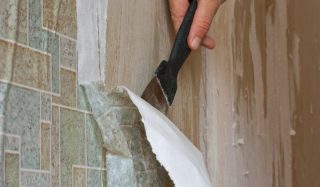
If foam has dripped onto carpets and furniture, it comes in handy "Dimexide" and nail polish remover... The products are applied carefully so as not to damage the surface. After processing, wash with soapy water.
Working with other materials:
- Stripping wallpaper depends on the strength of the topcoat. For washable take vegetable oil, "Dimexid", then wipe the plane with a detergent. On vinyl wallpaper use a nail polish remover... Paper wallpaper cannot be cleaned, since the top layer is removed together with the foam. If the stain is large, the strip is re-glued.
- Method for brick also depends on its surface. If the wall is under plaster, take hard brushes, knives. Professional washes are used on the front brick.
Tile and ceramic tiles not afraid of cleaning with a scraper, spatula.Residues are softened with an acetone based solvent.
Cleaning the gun after handling polyurethane foam
If a can of foam is left on the gun, it may last a while until it runs out of material. If it is removed from the gun, flushing is required. It consists in releasing the solvent inside the pistol system, then you need to wait 20 - 30 minutes. The device is being developed by periodically pressing the trigger.

